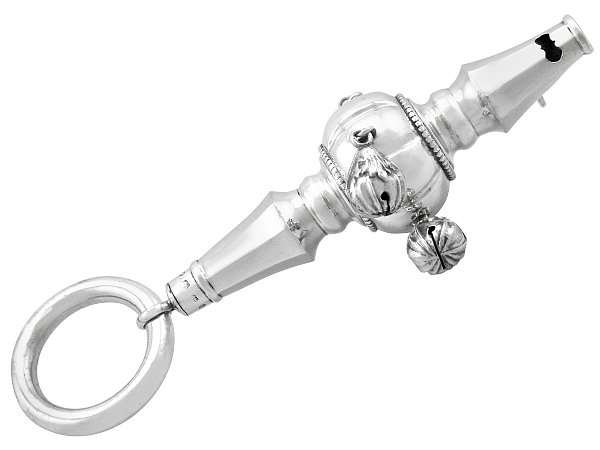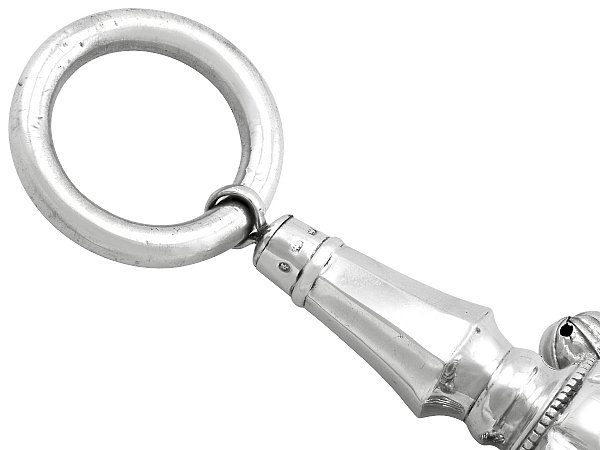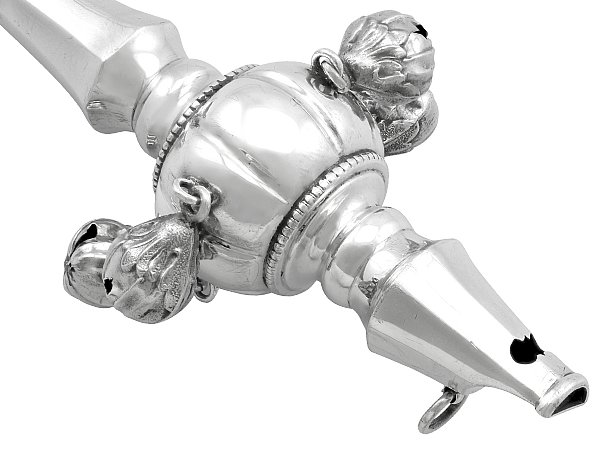History of the Rattle
The history of the rattle dates back centuries. A clay rattle was found that dates to the early Iron Age Lusatian culture, and many similar examples have been discovered at Greco-Roman archaeological sites.
Silver rattles and teething-sticks have been traditional christening gifts for many years; they are referred to in many Elizabethan inventories. These are documented in many portraits, which show children with rattles hung round their necks on brightly coloured ribbon.
Early rattles featured coral handles. These were popular for many reasons. The first is that a coral handle was the perfect antidote for teething babies, as it was both smooth and cool. Secondly, coral was considered to be a means of guarding a child against witchcraft. This belief stemmed from Roman times, where babies’ cradles would be festooned with coral hung on string to defer evil forces. Although this practice declined, the reputation of coral as a protective device continued.
Stylistically, most rattles made up until the 19th century were very similar. These were often made from thin silver, and crafted in a baluster shape. They also featured small bells and a whistle mouthpiece. This combination was ideal for entertaining and soothing a restless baby.
Georgian silver rattles are usually quite small and delicate. Their decoration included bright cut floral and foliate designs. Later styles are much larger, their size allowing for more elaborate heavy chased decoration.
Rattles from the late 19th and early 20th century rarely feature coral handles. In this period, mother of pearl and ivory were the preferred materials. Additionally, most featured a teething ring rather than a stick handle. Bells also began to decline in popularity at this time. Instead, a cheaper alternative became the norm; a hollow bodied rattle filled with dried peas that made a noise when shook.
Novelty rattles were also very popular. Like many other novelty goods, many of these examples originate from Birmingham which was the central hub for the production of these pieces. Novelty forms were varied, however they included animals, ‘Punch and Judy’, policemen, and an amusing example which shows a crying child on one side and a content child on the other.
Due to the materials initially used to craft rattles, early examples are often unmarked. However, those dated from the 18th century and beyond should have full hallmarks which can usually be found on the handle mount.





